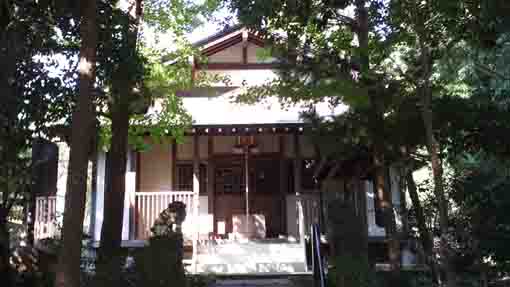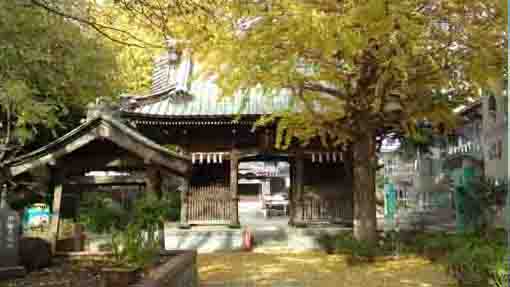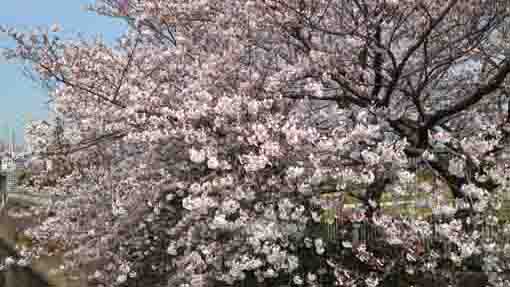Nakayama is in between Narita And Haneda International Airport
<クッキーについての同意並び欧州居住者向けプライバシーポリシー>
中山・下総・散歩道
Komagata Grand Shrine and Obisha






Komagata Grand Shrine stands on Tonodai in Ono-cho Ichikawa-shi Chibaken and its supporters succeeded the local tradition and culture in the area. Moreover, it has been supported by the people who has been respecting Masakado Taira the great samurai in Kanto. According to the fairy tales in Ichikawa, a priest of Horenji Temple on the hill at Tonodai saw three samurai worriers on their horsebacks beside his bedroom at night in long time ago. They told him that they could become guardians of their village to protect them from any disasters if villagers and the priest would dedicate them as ambassadors of gods. Then they ran to east. One of their horse was white. Next day, the priest found the footprints of the horses and he thought it was real. Then the priest followed their tracks and he finally reached at a wood. He told this story to villagers and they all said, 'It must be Masakado Taira'. Then they built a small shrine and they have protected it for a long time. This is the origin of Komagata Grand Shrine. Many people living in Ono and Ichikawa love and respect Masakado Taira even now. Therefore, they do not go Naritasan Shinshoji Temple since it was built to subdue him. They do not plant nandins and bellflowers in their garden since a bow used to kill him had made of a nandin and the name of a woman having fraud him was Kikyo (a bellflower). They do not feed white horses since the principle image of Komagata Grand Shrine is a white horse. Many of those people keep these taboos even now.
Komagata Grand Shrine has been supported by the people living in Tonodai area for several hundred years. The supports of this shrine keep a traditional festival 'Niramekko Obisha'.
And there are Goryo Jinja Shrine dedicating Kagemasa Goro Kamakura and Tonodai Tenmangu Shrine dedicating a god for Education, Michizane Sugawara in this shrine.
Komagata Grand Shrine is one of the best shrines for people who study both literary and military arts since it dedicates Masakado Taira, Kagemasa Goro Kamakura and Michizane Sugawara in it. And it tells visitors culture and history in Tonodai. Why don't you visit Komagata Grand Shrine?
Komagata Grand Shrine
Komagata Grand Shrine and Obisha Festival
Komagata Grand Shrine dedicates Futsunushi no Kami as the main god and Masakado Taira, one of the greatest samurai worriers in Kanto appearing on some legends in Ono.Komagata Grand Shrine has been keeping 'Obisha', a festival praying for rich harvest and safe guard in the village.
The villagers or supporters of this shrine assemble at Komagata Grand Shrine in January 19th to make scared strew ropes for the shrine together. Next, they make three mortars of rice cakes. They bake a 15cm diameter senbei cracker made by the rice cake from the first mortar for putting under the offerings on the gods. The rice cake from the second mortar would be three helmet shaped offerings. The rice cake from the third mortar would be divided as small pieces using for mochi fight by the supporters that they throw them at each other. It is good for them to avoid some problems when they are hit the mochi. Moreover, it could be efficient to avoid getting cold. Then the first day of the festival is ended.
Next day of 20th, they put the sacred straw ropes and offerings made the yesterday with some food and alcohol to the god and they all pray for in front of the main hall. Then they beat drums and chant 'namu myo ho ren ge kyo'. Finally, they drink some alcohol called Omiki and come back to the room. In the room, they are divided into two groups and two persons try to glare each other. A referee between them gives them beginning of the game, they drink some alcohol, if one of the two rough, he/she loses the game. And the loser must drink a large cup of alcohol. This festival is called 'Niramekko Obisha'.
Now the villagers and the supporters hold the events in accordance to a document copied in 1878 by the record written in 1859. After WWII, the festival has been held in only one day, January 20th at the office of the shrine. Niramekko Obisha was registered as a municipal folk cultural asset of Ichikawa city in 1965.
September 2003
Ichikawa-shi Board of Education
駒形大神社参道脇案内板より
Goryo Jinja Shrine
Goryo Jinja Shrine
Kagemasa Gonnogoro Kamakura is dedicatedThe festival is held in November 23rd
The History of Goryo Jinja Shrine and Kagemasa Kamakura
There exists a record that Honkoji Temple would built Goryo Jinja Shrine during Genroku Era (1688 - 1703). It originally had stood at the west part of Tonodai. It moved in Komagata Grand Shrine in 1908. The supporters of Komagata Grand Shrine built the shrine in 1998. (Some said that it would dedicate Masakado Taira).
Kagemasa Goro Kamakura was a descendant of the Emperor Kanmu, so his family belonged to Kanmu Heishi Clan, and he was a boss of Kamakura Clan. When he was 16 years old, he served Yoshiie Minamoto and attended the Go Sannen War happened in 1083. In the battle, Kagemasa was got an arrow in his right eye by Yasaburo Chokai. But he shot at Yasaburo with the arrow on his eye and he won the battle. After that his co-worker, Tametsugu Heita Miura put his foot on Kagemasa's face to pull the arrow out of his eye. But Kagemasa told 'It is good for dying at the battle field since I am a samurai, but I can't stand at stepping on my face!' Tametsugu Miura soon apologized at that and he put his knee on his head to pull it out. This was the famous story that he became one of the most popular hero among samurais in Japan. In 'Oshu Go Sannenki', they all praised him when people heard that.
In difference from other beliefs in Goryo, since villagers in Ono respected and loved some great feats of Kagemasa Goro Kamakura, they could build Goryo Jinja Shrine in Ono.
Please the spirit of the hero would stay here forever to support us!
御霊神社前案内板より
Tonodai Tenmangu Shrine
The History of Tonodai Tenmangu Shrine
Tonodai Tenmangu Shrine that dedicats Michizane Sugawara was originally built in the middle of Edo period, it has been called 'Ogashiwa-cho no Tenjin sama (Tenjin God in Ogashiwa town) and has faithfully believed as the god of study since then.At the age between Showa and Heisei Era, supporters of this shrine decided to build the new shrine since they believed this shrine deeply and many of them wanted to rebuild. In November 23rd of 1990, the new god came to the new shrine from Kitano Tenmangu Shrine in Kyoto, the head shrine of Tenmagu in Japan.
宮司 筥崎博生謹誌
殿台天満宮前案内板より
引用、抜粋並びに参考
駒形大神社参道前案内板
御霊神社前案内板
殿台天満宮案内板
市川市ホームページ
改訂新版市川のむかし話
The Location and Access to Komagata Grand Shrine
Komagata Grind Shrine

The map of the noted spots near Ichikawa Ono Station
PDF of the map of the landmarks near Ichikawa Ono Station- 4-2757 Ono-cho, Ichikawa-shi, Chiba-ken
- Komagata Grand Shrine has great accessibilities from both Narita and Haneda International Airport.
- From Narita International Airport, take JR Sobu-express line, transfer the line at Nishi-funabashi to Musashino Line bound to Fuchuhoncho or Higashi Tokorozawa, get off Ichikawa Ono Sta. And also take Hokuso Line, transfer the line at Higashimatsudo to Musashino Lline, get off Ichikawa Ono Sta. It takes minimally 50 minutes from Narita Airport.
- From Haneda International Airport, take Keikyu-line bound to Narita, transfer the line at Takasago Sta to Hokuso Line, and transfer the line at Higashi Matsudo Sta to Musashino Line, get off Ichikawa Ono Sta. It takes almost 1 hour from Haneda Airport.
- From Tokyo Sta, take Musashino Line bound to Fuchuhoncho or Higashi Tokorozawa, get off Ichikawa Ono Sta. It takes about 28 minutes from Tokyo Sta.
- From Akihabara Sta, take Sobu line bound to Chiba, Tsudanuma or Nishi Funabashi, Ttransfer the line at Nishi Funabashi to Musashino Line bound to Fuchu Honcho or Higashi Tokorozawa, get off Ichikawa Ono Sta.
- Take 17 minute walk from Ichikawa Ono Sta.
The Landmarks near Komagata Grand Shrine

Omachi Nashi Kaido
Omachi and Ono have many pear gardens, pears are their special products.
Omachi Nature Observation Garden
It has the Rose Garden and the Village of Maple Trees.
Komagata Grand Shrine
It has a legend connecting to Masakado Taira and it dedicates him.
Soyasan Horenji Temple
It was built by Norinobu Soya and has a legends of Masakado Taira and Komagata Grand Shrine.
Tenman Tenmangu Shrine
It was built by Masakado Taira, one of the mot famous samurai heroes in Kanto.
Onosan Jokoji Temple
It was famous for the statue of Chichinashi Nio and it belongs to Shichifukujin in Ichokawa.
Soyasan Reirinji Temple
The shrine of Gozu Tenno, the god giving children to faithful couples, is dedicated in it.
Kaigensan Honshoji Temple
It dedicates Daikokuten, the god of wealth, belonging to Ichikawa Shichifukujin.
Koinsan Honkoji Temple
It is an old temple with 650 years history and it has Ono Tenmangu Shrine built by Masakado Taira.
Manyo Botanical Garden
Many Flowers written in the Myriad of Leaves are exhibited with tanka poems
Kozato Koen Park
Swans and some waterfowls go on the pond surrounded by cherry trees in spring.
A Walk Along Ogashiwagawa River
Many attractive landmarks stand along it.
Ryukyosan Myoshoji Temple
The sacred temple covered with holy cherry trees is famous for the legend of Seven Sutra Mound and Shichifukujin in Ichikawa.
Homensan Anrakuji Temple
The first nunnery of Nichiren Sect built by the Princess Tokiwai, the legend said ther daughter of the Emperor drifted to Ichikawa.- 広告 Advertisement -
